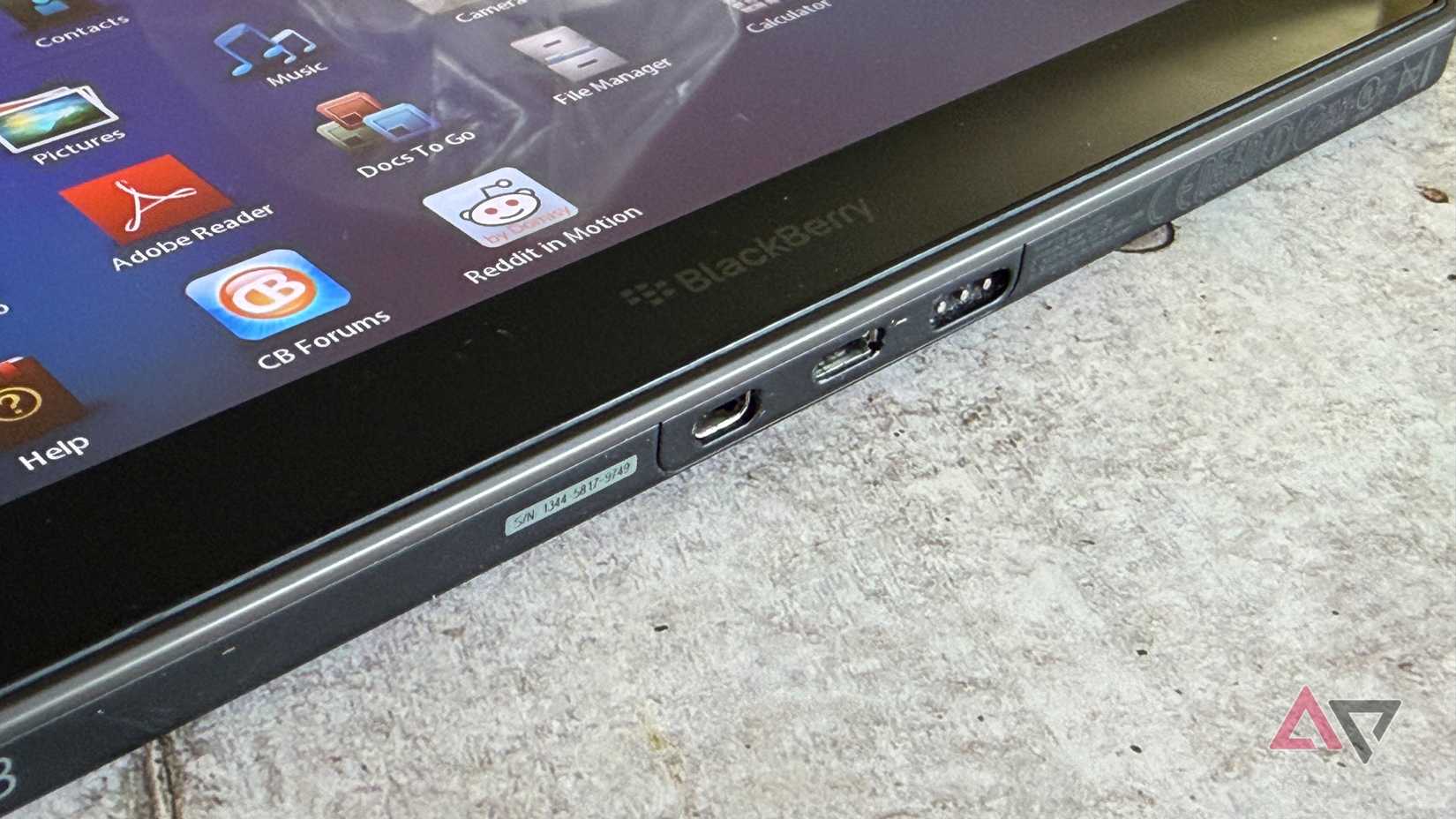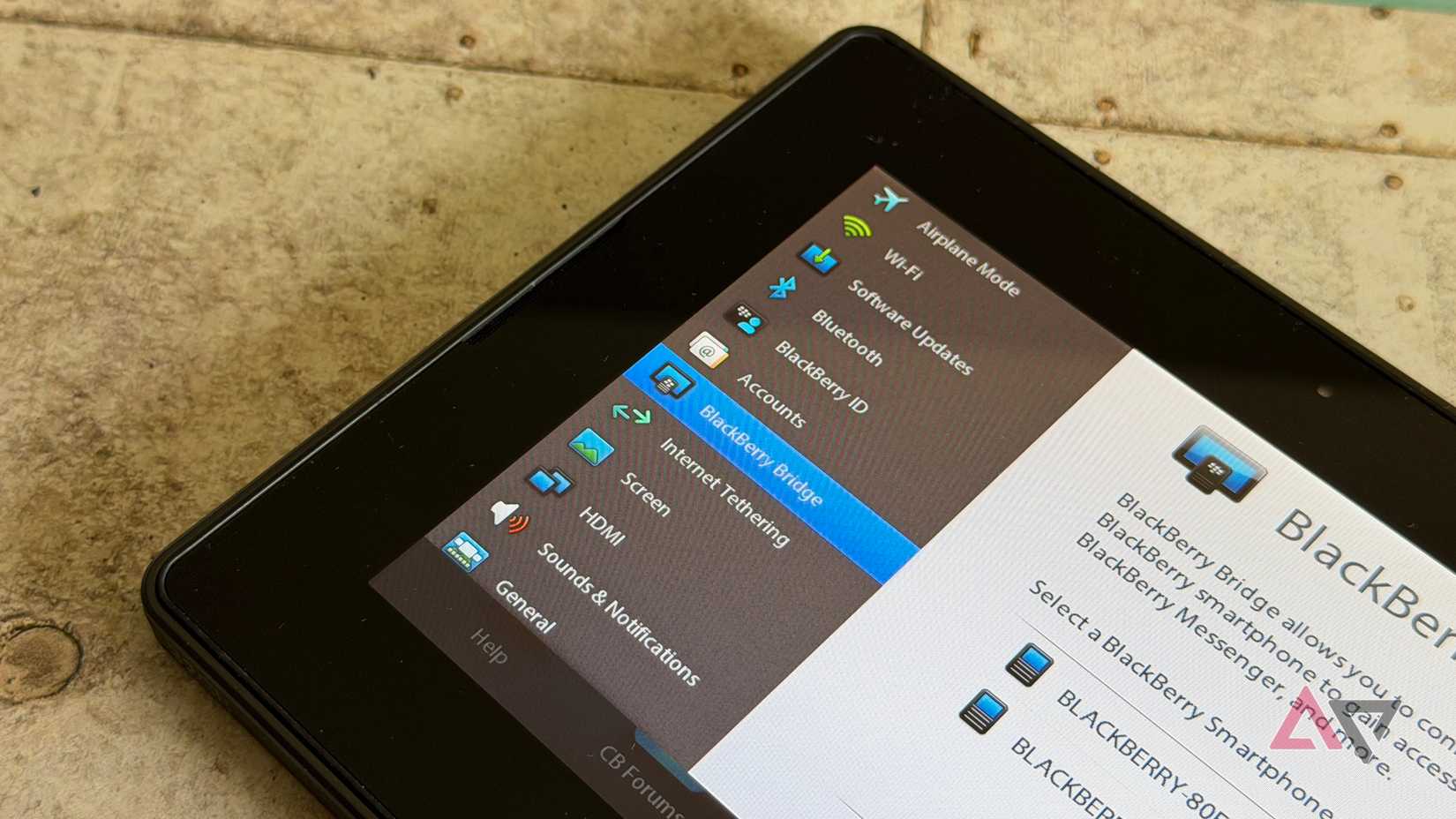BlackBerry won’t be remembered for its tablets, as the BlackBerry PlayBook never gained the traction it needed to be a force in the marketplace.
However, much like the company’s software, its Playbook tablet was ahead of its time. Many of the features and functions we either don’t have anymore or take for granted were first introduced by BlackBerry with the PlayBook.
I never paid much attention to the PlayBook when it was released in 2011, but it wasn’t long before I was able to score one at a bargain price on eBay.
It wasn’t perfect, and the company made plenty of mistakes with its software, which contributed to the overall decline at BlackBerry.
Still, I loved using my Playbook and Passport combination until the company shut down its servers in January 2022.
Here’s why the PlayBook was ahead of its time and why I loved using mine so much.
Hardware that meant business
The Playbook was small but capable
It looked unassuming, but the Playbook was a premium tablet. I loved its rubberized texture, and it felt sturdy.
It carried the same build quality as the company’s phones, so I knew it wouldn’t break at the slightest bump or drop.
It only had a 7-inch LCD panel, but the resolution was respectable for 2011, and it was better than expected for watching content.
BlackBerry Bridge isn’t the first time the company’s been ahead of the competition.
It also had a few features that we’ve lost with tablets over the years.
A micro-HDMI port enabled the Playbook to be connected to a television or monitor, making it ideal for presentations.
The Playbook had practical consumer applications for BlackBerry owners, but it was primarily designed for business use.
Enterprise services and VPN compatibility made it a fantastic choice for IT departments concerned with security, lending the legendary BlackBerry services protection to a tablet device.
Software that was ahead of its time
BlackBerry Bridge was like nothing else
I loved the PlayBook design, but its software set it apart from the competition.
Before any other manufacturer, you could send a message to your text and email contacts through your PlayBook by using your BlackBerry phone.
Your tablet didn’t need a cellular connection, and it didn’t even have to be hooked up through Wi-Fi.
BlackBerry Bridge enabled your PlayBook to be paired with your BlackBerry smartphone via Bluetooth, providing full access to communications.
BlackBerry Bridge was essential for getting the most out of your PlayBook, as I’ll mention later, but I loved being able to plug my BlackBerry Passport into the charger at the end of the day and still be able to message friends.
You can send messages through your Apple iPad or Android tablet today, but that came much later.
The PlayBook was able to send SMS messages through your cell connection without needing a SIM card of its own in 2012. Apple wouldn’t match that on the iPad until 2014.
Additionally, the BlackBerry OS software ran smoothly on the PlayBook, and multitasking worked well.
It had a fantastic accessory dock that functioned as both a charger and a display stand, allowing me to keep it on my desk to view any incoming notifications.
The PlayBook also came complete with an LED, just like a proper BlackBerry.
It wasn’t all amazing for the PlayBook
BlackBerry had its share of problems
I mentioned that BlackBerry Bridge was essential for getting full functionality from your PlayBook, because despite being a business-oriented device aimed at professional users, the PlayBook didn’t ship with a native email program.
It was a bizarre oversight, but not an uncommon one for BlackBerry at the time.
It severely limited the pool of potential buyers for the tablet, basically making it a non-starter for anyone who didn’t already own a BlackBerry. It’s a shame because, with the right software, the PlayBook had a chance to stand on its own merits.
It lacked a vibrant app ecosystem — a challenge BlackBerry would face in later years.
Because the PlayBook didn’t need its own mobile data connection, it was reliant on the Bluetooth connection to your device, so on occasion, you’d notice slowdowns.
Still, it was innovative, bringing features to market that are now standards.
BlackBerry Bridge isn’t the first time the company’s been ahead of the competition.
People laughed at BlackBerry for its use of gesture navigation in BlackBerry OS 10, but it wasn’t long before that became the standard.
I’d still be using my Passport/PlayBook combination today if it were functioning properly.
More reasons to love BlackBerry
I love my old BlackBerry devices, and I wish we could get a true successor that matched not only the hardware of the physical keyboard but also the complete software experience.
BlackBerry OS was excellent, and my BlackBerry phones always ran well and were power-efficient.
We’ll never see anything like the PlayBook again, but it was the forerunner to many of the features and functions we expect on our tablets today.




